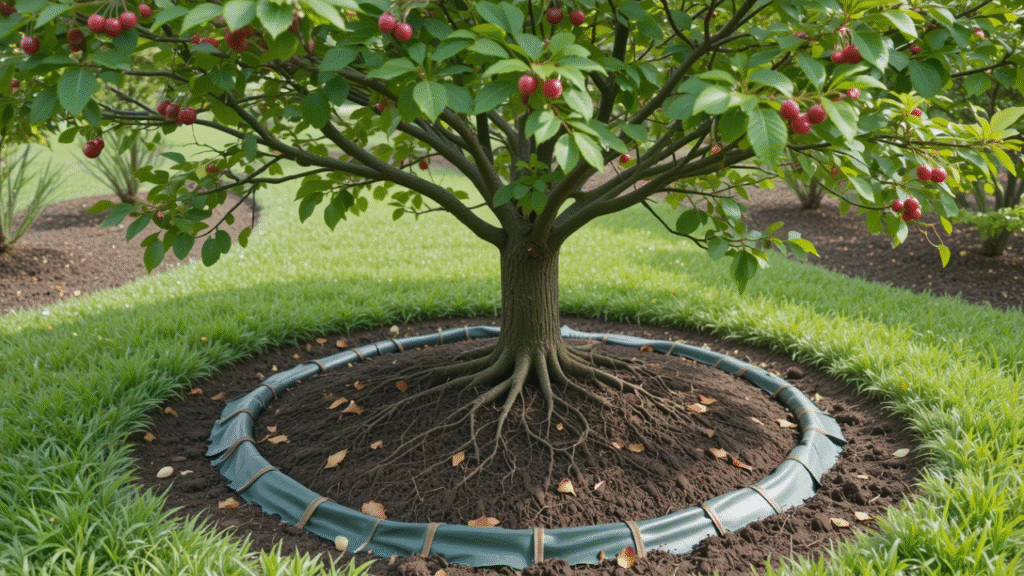
How to Protect Your Cherry Tree from Root Damage in the Spring: Essential Tips for Healthy Growth
Spring is a critical time for your cherry tree, and protecting its roots is key to ensuring strong, healthy growth 🌱🍒. How to Protect Your Cherry Tree from Root Damage in the Spring isn’t just about preventing harm—it’s about setting your tree up for success throughout the growing season. As temperatures fluctuate and the soil warms up, cherry trees are particularly vulnerable to root stress from freezing, overwatering, and physical damage. In this guide, we’ll share essential tips to safeguard your tree’s roots, ensuring it thrives and bears fruit for years to come. Let’s dive into the steps you can take today! 🌳
Table of Contents
Toggle🌱 Understanding Root Damage in Cherry Trees 🌱
Cherry trees rely on strong, healthy roots for their overall well-being 🌱. In spring, when temperatures fluctuate and the ground thaws, their roots are especially vulnerable to damage. Here’s what can harm them:
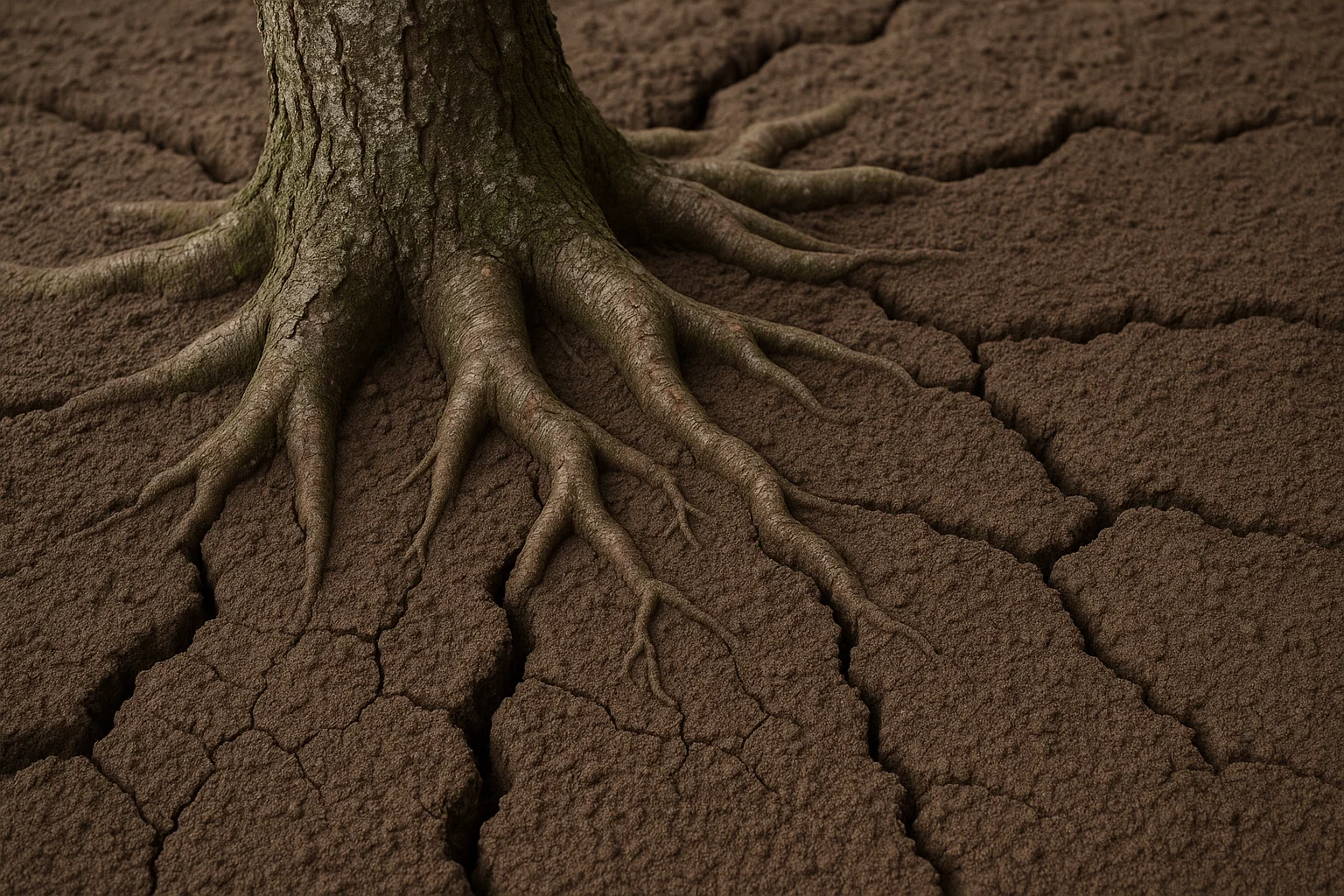
- Freeze-Thaw Cycles: Spring’s temperature swings can cause the ground to freeze and thaw repeatedly. This process can crack and damage delicate roots, making the tree more susceptible to disease and stress. 🥶🌞
- Overwatering: While spring rains are welcome, too much moisture can flood the root zone, leading to root rot. It’s important to ensure the soil drains well and doesn’t stay soggy. 💧
- Physical Damage: Activities like lawn mowing or digging around the tree can injure the roots, affecting the tree’s ability to absorb nutrients and water. 🚜
Understanding these root threats allows you to take proactive steps to protect your tree. Healthy roots are essential for vibrant growth and a bountiful cherry harvest! 🍒🌳
🌞❄️ Preventing Freeze-Thaw Damage 🌞❄️
Spring’s fluctuating temperatures can be a double-edged sword for cherry trees 🌞❄️. The freeze-thaw cycle, where the ground alternates between freezing and thawing, puts immense stress on the roots. Here’s how to protect your tree:
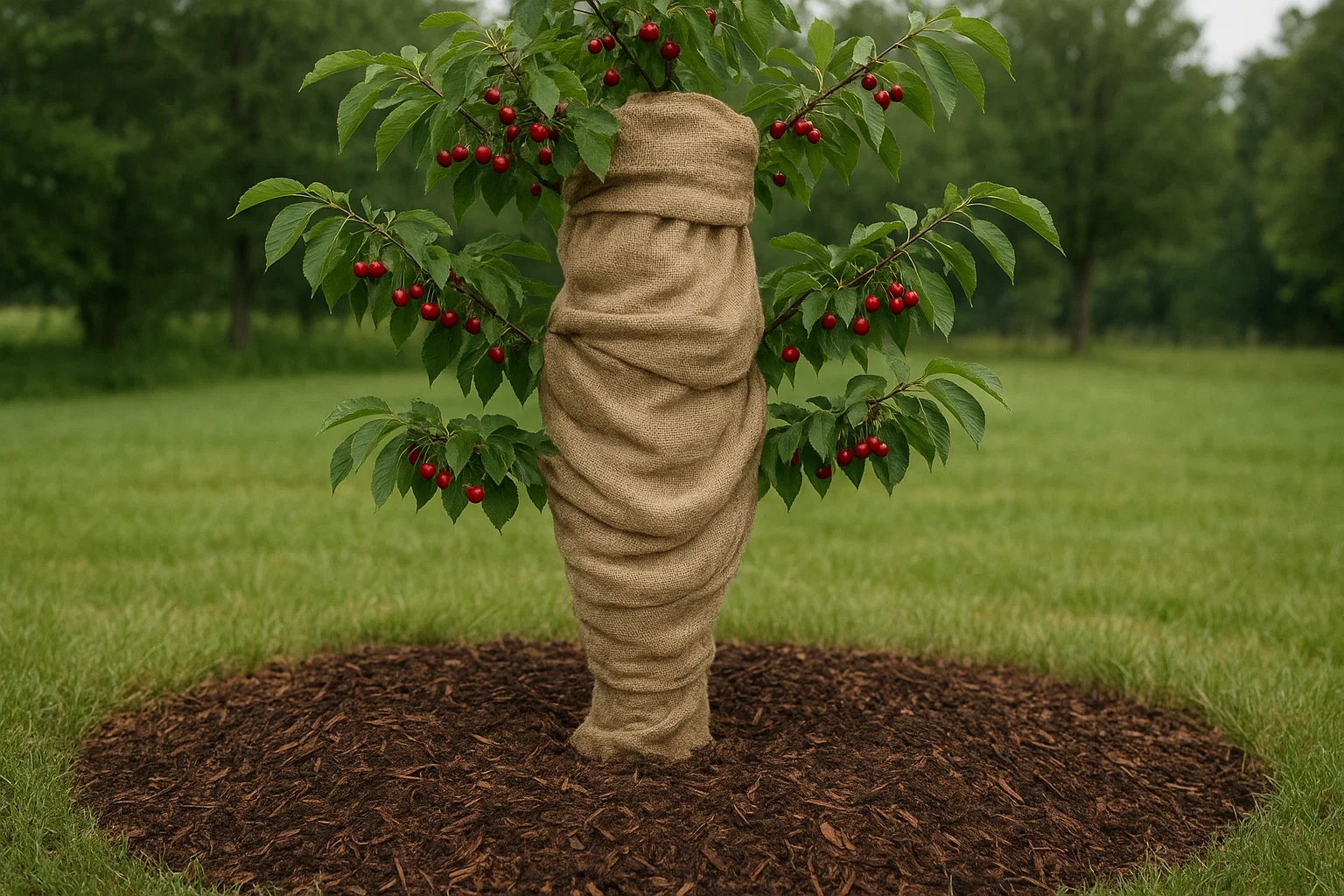
🌿 Mulch for Insulation
One of the best ways to prevent freeze-thaw damage is by adding a thick layer of mulch around the base of your tree. 🌿 This keeps the soil temperature stable, reducing the risk of roots freezing during the night and thawing too quickly during the day. Organic materials like wood chips, straw, or leaves work wonders. Just be sure to leave space around the trunk to avoid moisture buildup.
🧣 Covering the Roots
If you’re expecting a sudden cold snap, consider using burlap or a breathable fabric to cover the tree’s root zone. This adds an extra layer of insulation and shields the roots from extreme temperature fluctuations.
🚫 Avoid Disturbing the Soil
During early spring, refrain from digging around the base of your tree. Disturbing the soil can expose vulnerable roots to the elements, increasing the risk of damage.
By providing extra protection to the roots with these simple steps, your cherry tree will be better equipped to handle those unpredictable spring temperature swings. 🌳💚
🌱💧 Managing Soil Moisture 🌱💧
Proper soil moisture management is crucial to preventing root damage in your cherry tree, especially during spring 🌱💧. Here’s how to keep your tree’s roots happy and healthy:
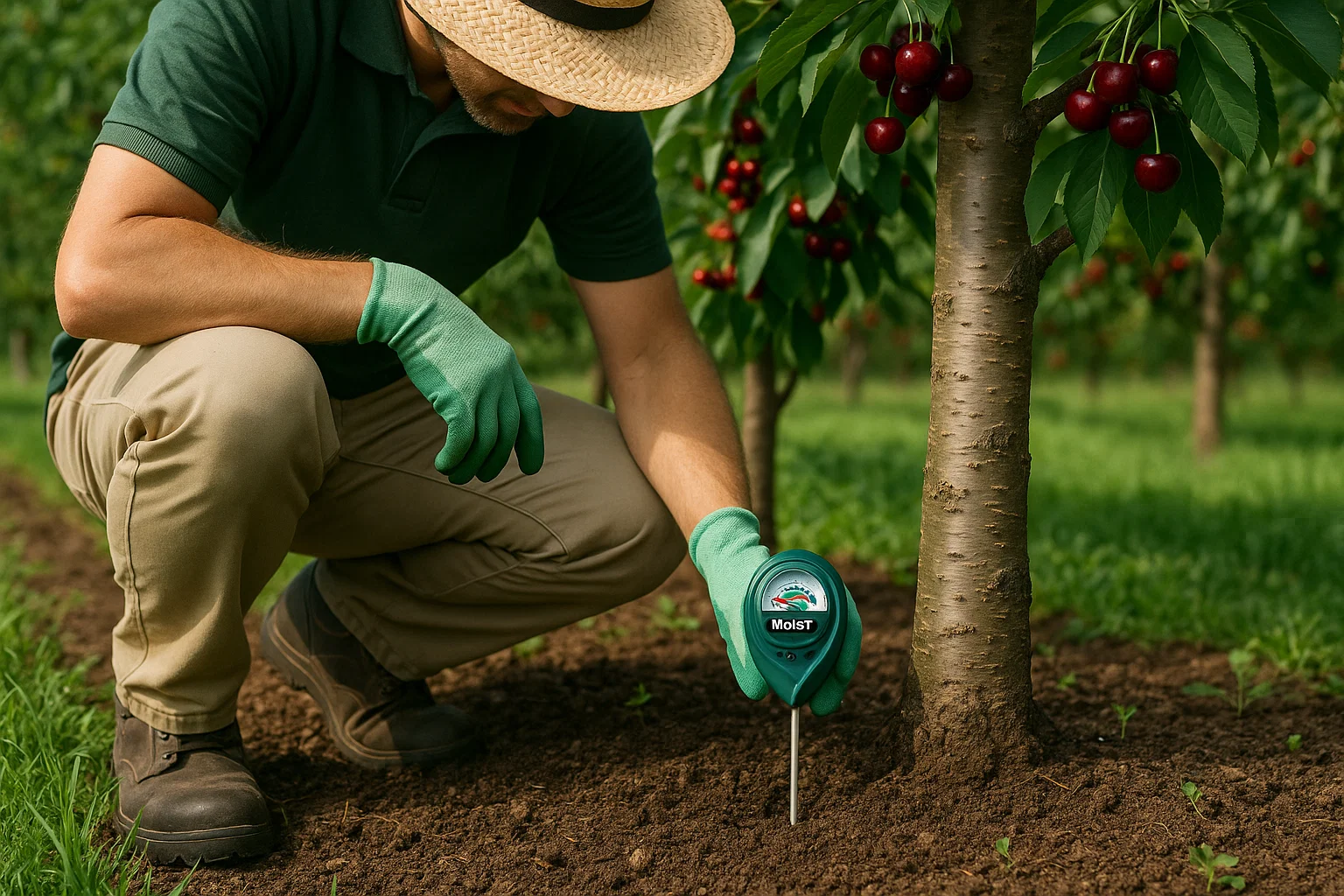
🚫🌧️ Avoid Overwatering
While spring rains are beneficial, excessive moisture can flood the roots and lead to root rot. Ensure the soil drains well and doesn’t stay soggy for long periods. If your soil is heavy clay, consider amending it with compost to improve drainage.
🌊 Deep, Infrequent Watering
Instead of frequent shallow watering, aim to water deeply but less often. This encourages roots to grow deeper into the soil, making them stronger and more resilient to stress. Deep watering also helps to avoid the surface roots that can become weak and vulnerable.
📏💦 Use a Moisture Meter
To keep an eye on soil moisture levels, consider using a moisture meter. This simple tool helps you know when your tree really needs water, so you avoid overwatering and underwatering.
By carefully managing moisture, you’ll prevent root stress and help your cherry tree thrive in the spring. Healthy roots mean a healthier tree and a better fruit yield! 🍒🌳 That’s why it’s important to learn how to protect your cherry tree from root damage in the spring to support strong, productive growth.
🌳💔 Protecting Roots from Physical Damage 💔🌳
Physical damage to your cherry tree’s roots can have long-lasting effects, making it harder for the tree to absorb nutrients and water 🌳💔. Here’s how to keep those delicate roots safe from harm:
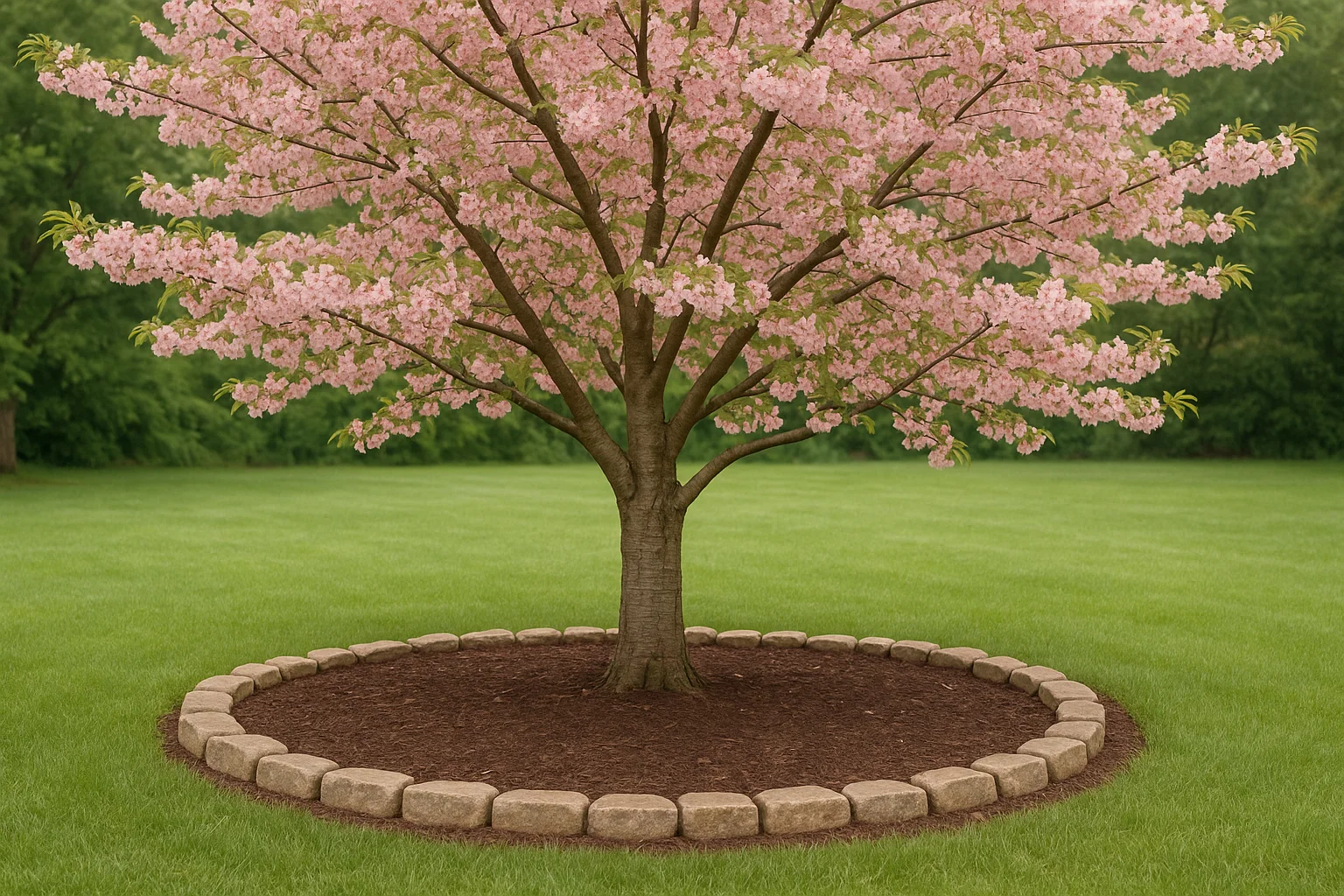
🛑 Create a Root Protection Zone 🛑
Mark the area around the base of your tree where roots are most likely to be. This will help you and others avoid digging or walking over it. Using stones or a garden border can also create a physical barrier to protect the roots from accidental damage.
🚜💨 Avoid Lawn Equipment 💨🚜
Mowing or using garden tools too close to the tree can injure the roots. If possible, adjust your lawnmower to avoid cutting near the tree’s base. You can also install a tree guard or protective ring around the trunk to prevent accidental damage from tools.
🚶♀️🚶♂️ Reduce Foot Traffic 🚶♀️🚶♂️
Try to limit foot traffic around your cherry tree. Constant pressure from walking over the root zone can compact the soil, reducing airflow to the roots and making it harder for them to absorb water.
By taking simple steps to protect your tree’s roots from physical harm, you’ll ensure that the roots stay healthy and strong, leading to better growth and a higher chance of fruit production. 🍒🌿 Understanding how to protect your cherry tree from root damage in the spring is a key part of this process, helping your tree thrive throughout the season.
🌱💚 Aerating the Soil 💚🌱
Aerating the soil around your cherry tree is a key step in ensuring its roots stay healthy and well-fed 🌱. Compacted soil can limit root growth and prevent the tree from getting the nutrients and oxygen it needs. Here’s how to keep the soil loose and breathable:
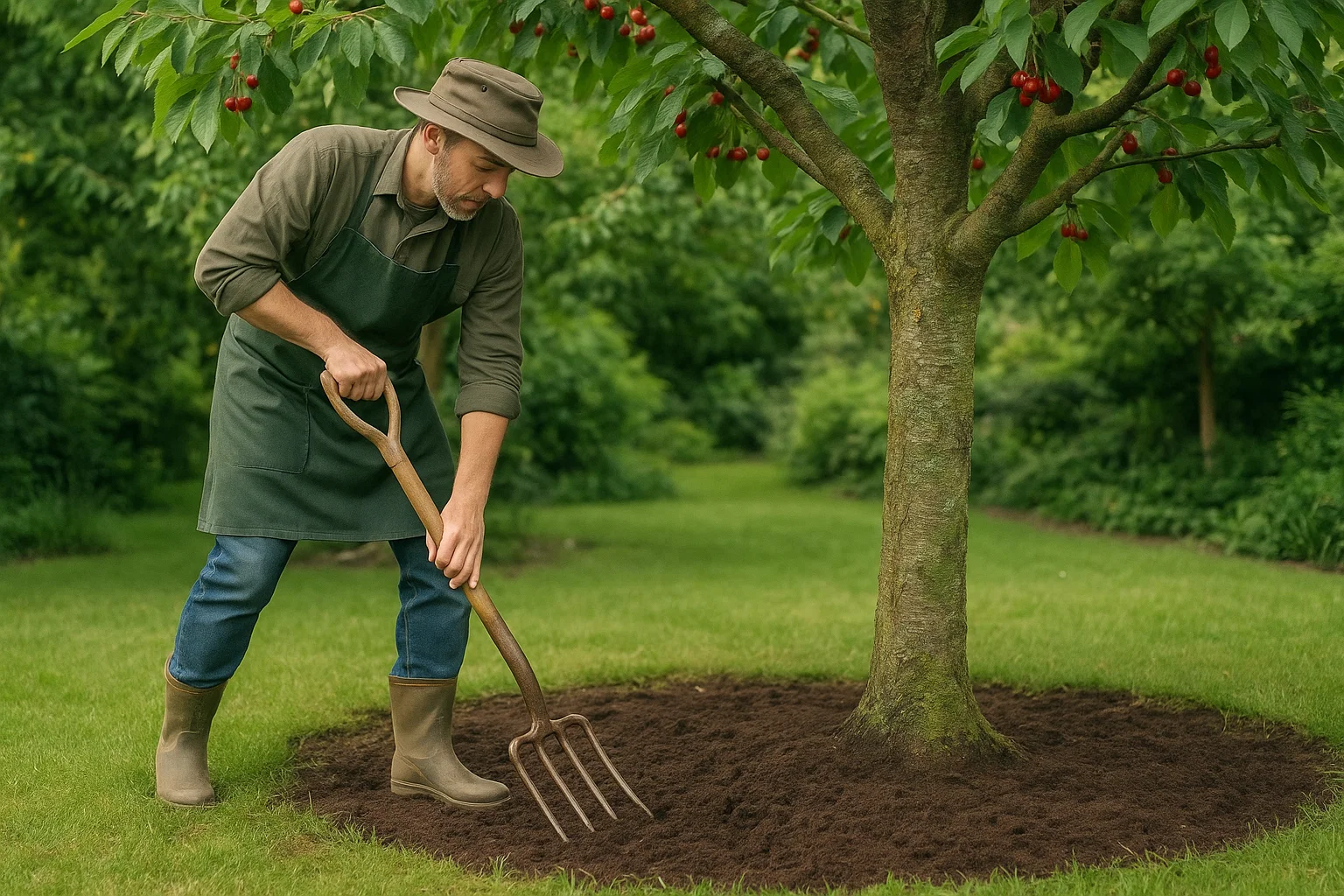
🌳 Why Aeration Matters 🌳
Soil compaction occurs when the soil becomes too dense, often due to heavy rain, foot traffic, or even garden tools. This makes it difficult for roots to expand and absorb water and nutrients properly. Aerating the soil helps improve root penetration, drainage, and overall tree health.
🧑🌾🔨 How to Aerate 🔨🧑🌾
Use a garden fork or a specialized aerator tool to create small holes (about 2–4 inches deep) around the tree’s root zone. Be careful not to damage any surface roots while aerating. Space the holes about 6–8 inches apart to ensure thorough aeration.
🌸 When to Aerate 🌸
The best time to aerate is early in the spring, before the tree begins to push out new growth. This ensures the soil is loose and the roots have space to grow and expand during the growing season.
🌾 Add Organic Matter 🌾
After aerating, adding compost or well-rotted manure to the soil can further improve its structure and provide essential nutrients. The organic matter will also help retain moisture and encourage beneficial microorganisms in the soil.
Aerating your cherry tree’s soil is a simple yet effective way to boost root health, encourage better growth, and ensure your tree thrives in the long run. 🌳💚
🌳✂️ Pruning and Root Care ✂️🌳
Pruning your cherry tree correctly is crucial not just for its shape and size but also for maintaining healthy roots 🌳✂️. Here’s how proper pruning can support root health and overall tree vitality:
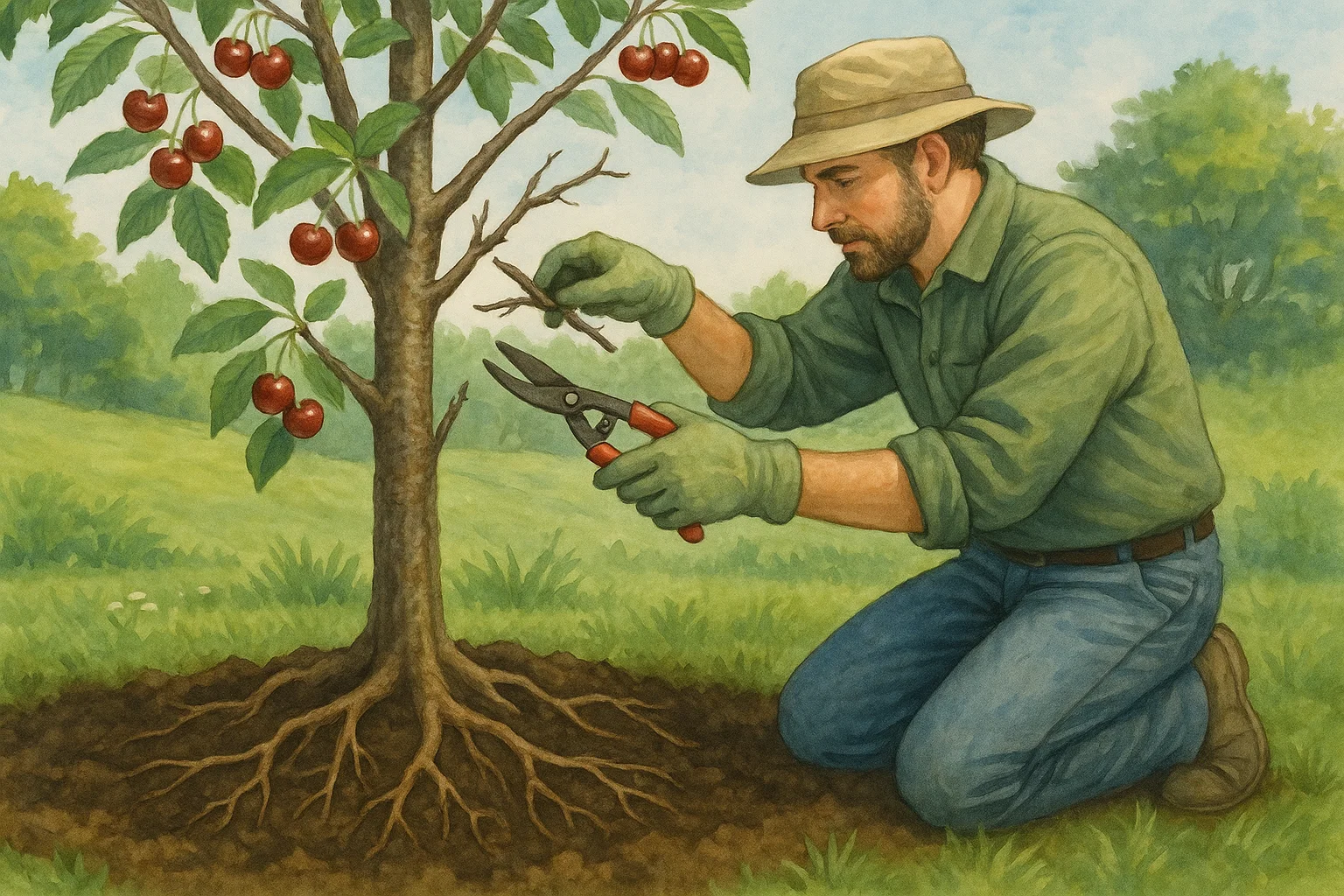
🌿 Prune with Care 🌿
Pruning should focus on removing dead or damaged branches. This reduces the tree’s energy demand, allowing the roots to provide more resources to the healthy parts of the tree. Be cautious not to over-prune in early spring, as this can stress the tree and affect root function.
🛑 Avoid Root Disturbance 🛑
When pruning, try not to disturb or expose the tree’s roots. Root systems can be damaged if the soil around them is dug up or disturbed. If you need to plant anything near the tree, ensure it won’t interfere with the root zone.
🌱 Healthy Root Zone 🌱
Keep the area around the roots free from debris and weeds. Weeds compete with your tree for nutrients and water, putting additional strain on the roots. Mulching around the base of the tree can help keep weeds in check and promote healthy roots.
❄️ Prune in the Right Season ❄️
The best time to prune cherry trees is during their dormant period (late winter or early spring). This ensures the tree has enough energy for the growing season and minimizes stress on both the roots and branches.
Proper pruning helps maintain a balance between the above-ground parts of the tree and its root system. By reducing stress and focusing energy where it’s needed most, your cherry tree will develop stronger roots and healthier growth. 🍒🌳 Learning how to protect your cherry tree from root damage in the spring further enhances these efforts, ensuring your tree remains resilient and vigorous.
🌳🌱 Fertilizing for Root Health 🌱🌳
Fertilizing your cherry tree properly is essential to support strong, healthy roots and overall tree growth 🌳🌱. Here’s how to fertilize effectively for optimal root health:
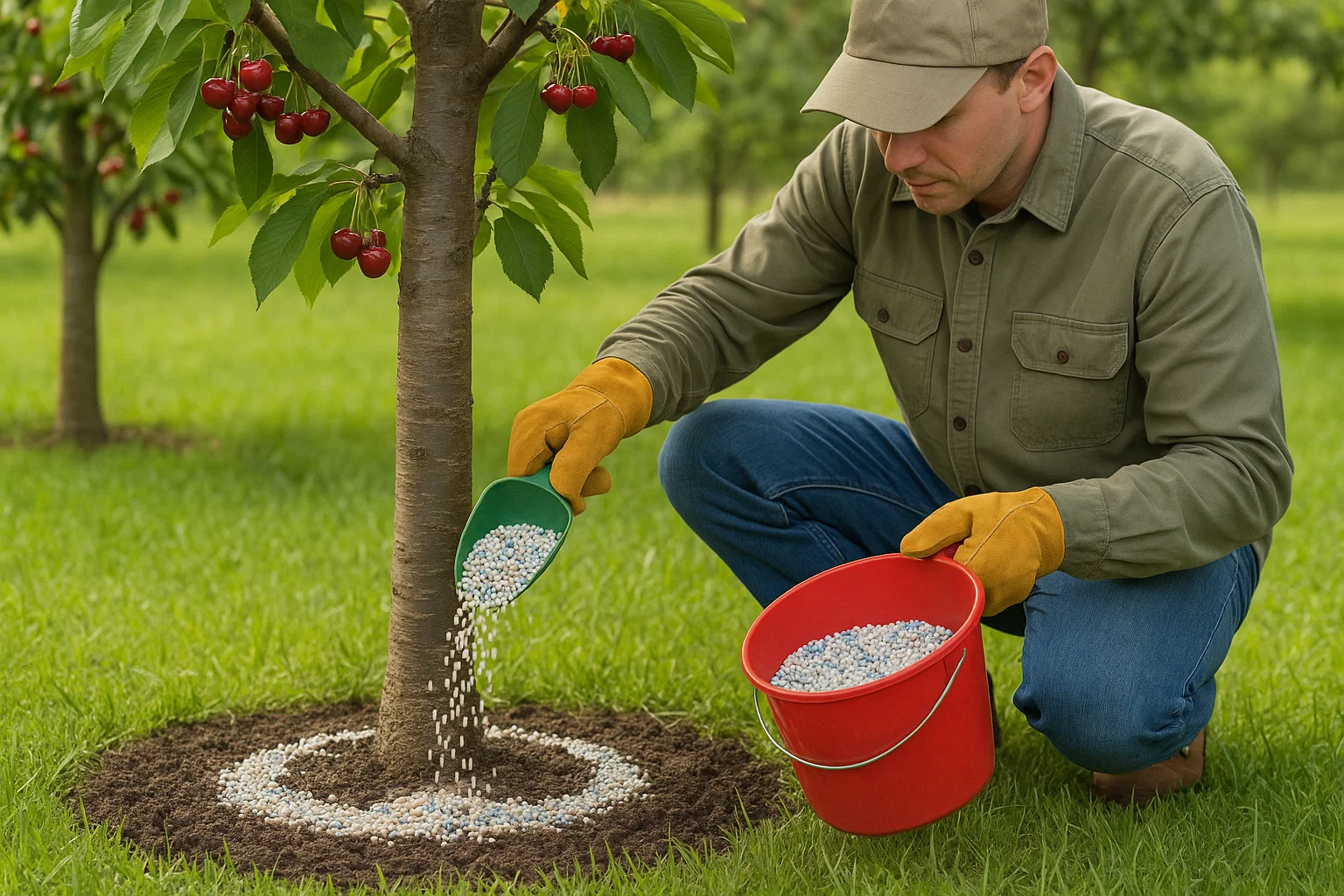
🧑🌾🌿 Choose the Right Fertilizer 🌿🧑🌾
Opt for a balanced, slow-release fertilizer with essential nutrients like nitrogen (N), phosphorus (P), and potassium (K). These help support root development and overall tree health. Organic options like compost or well-rotted manure are also great choices, as they improve soil structure and provide long-term benefits.
🌞🌸 Fertilize at the Right Time 🌸🌞
The best time to fertilize your cherry tree is early in the spring, before new growth begins. This gives the roots a nutrient boost just as the tree starts its growing season. Avoid fertilizing too late in the season, as it can encourage late growth that’s vulnerable to cold weather.
🚫 Avoid Over-Fertilizing 🚫
Too much fertilizer can lead to weak, shallow roots and excessive leaf growth, which can actually harm your tree. Stick to recommended amounts on the fertilizer package and avoid overfeeding, as this can stress the tree and attract pests.
🌊 Deep Root Feeding 🌊
Apply fertilizer around the drip line of the tree (where the tree’s branches extend) to ensure it reaches the roots. If you’re using a liquid fertilizer, water it deeply to ensure it reaches down to the root zone. Deep feeding encourages stronger roots that can better support the tree as it grows.
Proper fertilization helps your cherry tree establish a strong, thriving root system, which is crucial for long-term health and fruit production. With the right nutrients, your tree will have the foundation it needs for a bountiful season! 🍒🌱
🌳🔍 Monitoring Root Health Regularly 🔍🌳
Regularly checking the health of your cherry tree’s roots is crucial for catching any issues early and ensuring your tree thrives 🌳🔍. Here’s how to keep an eye on your tree’s root health:
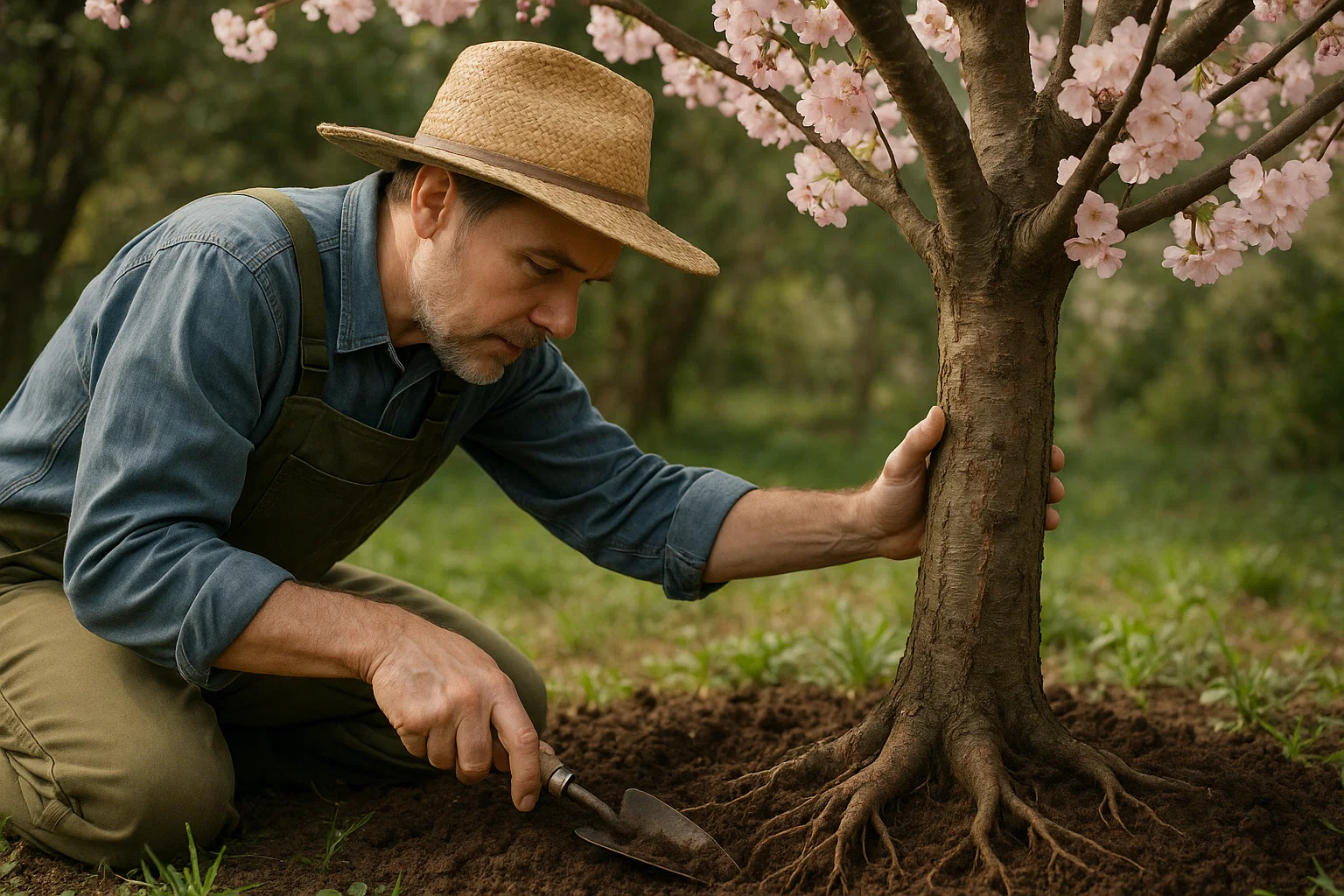
🍂 Look for Signs of Stress 🍂
Keep an eye on the overall appearance of your tree. Yellowing leaves, wilting, or poor growth can indicate problems with the roots. If your tree is not producing fruit as expected or if it appears stunted, there may be an issue below the surface.
🕵️♀️ Inspect the Soil 🕵️♀️
Gently check the soil around your tree for signs of root damage or rot. If you notice an unusual smell or see black, mushy roots, this could be a sign of root rot, often caused by overwatering or poor drainage.
🐛🔬 Check for Pests or Disease 🔬🐛
Sometimes, pests like root weevils or fungal infections can harm the roots. Look for signs of insect activity or unusual growth patterns around the root zone. If you suspect a pest problem, take action promptly to protect your tree’s roots.
🧑🌾 Conduct Root Zone Tests 🧑🌾
If you’re concerned about the health of your tree’s roots, consider performing a simple test by digging around the base of the tree (carefully, so you don’t disturb the roots too much) to examine the condition of the soil and roots. A healthy root system will have firm, white roots with minimal damage.
By regularly monitoring your tree’s roots and watching for early signs of stress, you can catch and address issues before they cause significant damage. Healthy roots = a healthy tree, and your cherry tree will be better equipped to withstand whatever challenges spring throws its way! 🌱🍒
🌳💚 Final Thoughts 💚🌳
Protecting your cherry tree from root damage in the spring is essential for its long-term health and vitality 🌳💚. By following these simple yet effective tips—such as managing soil moisture, preventing freeze-thaw damage, and monitoring root health regularly—you can ensure your tree’s roots stay strong, healthy, and resilient throughout the season. 🌱
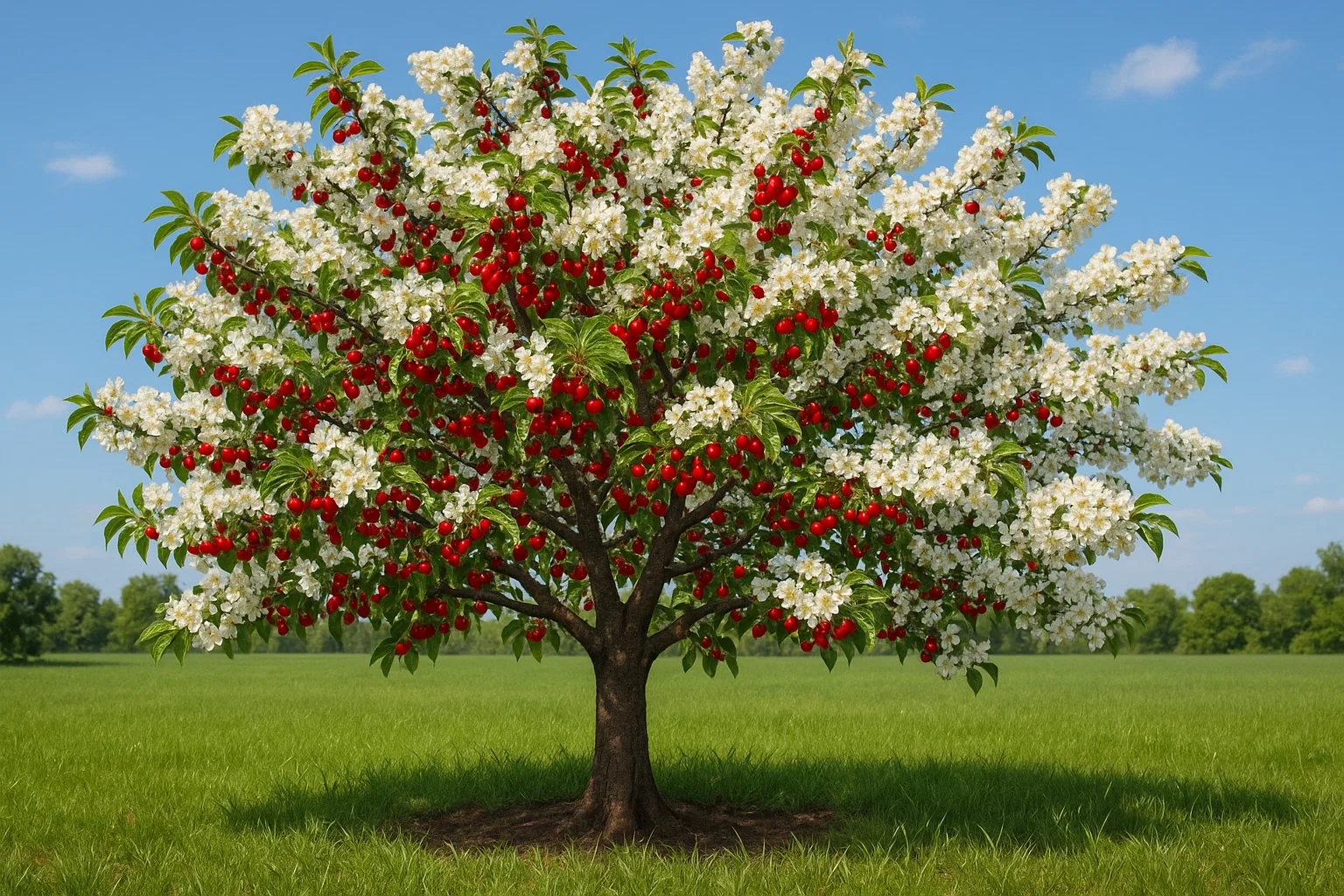
Remember, a healthy root system is the foundation of a thriving tree, leading to beautiful growth, bountiful fruit, and a cherry tree that can weather any challenge. 🍒 With a little care and attention, your tree will thrive year after year. 🌿 Knowing how to protect your cherry tree from root damage in the spring is essential to support this healthy foundation and ensure long-term success.
So, get ready to show your cherry tree the love it deserves, and watch it flourish! 🌞🍒
Frequently Asked Questions (FAQ)
Why is root damage a concern for cherry trees in spring?
Root damage can weaken cherry trees, making them vulnerable to pests, diseases, and poor growth. Protecting roots ensures a healthy tree.
How can I tell if my cherry tree's roots are damaged?
Signs of root damage include stunted growth, wilting leaves, or discolored bark. You may also notice roots exposed or broken.
What causes root damage to cherry trees in spring?
Root damage can occur from excessive moisture, freezing and thawing cycles, or physical disturbances like lawnmowers or digging.
How can I protect cherry tree roots from freezing in the spring?
Mulching around the base of your tree helps insulate the soil, keeping roots warmer and protecting them from freezing and thawing damage.
Is overwatering a risk for cherry tree roots in spring?
Yes, overwatering can suffocate roots and lead to rot. Ensure your cherry tree has well-drained soil and water deeply but infrequently.
Can I prune my cherry tree in the spring to prevent root damage?
Pruning should be done carefully. Avoid heavy pruning in early spring to reduce stress on the tree, which could affect root health.
How does soil compaction affect cherry tree roots in spring?
Soil compaction limits root growth and water flow, making it harder for cherry trees to establish strong, healthy roots. Aerating the soil can help.
When is the best time to inspect my cherry tree’s roots for damage?
Early spring, before new growth begins, is an ideal time to check for any signs of root damage or stress, ensuring your tree gets a healthy start to the growing season.
